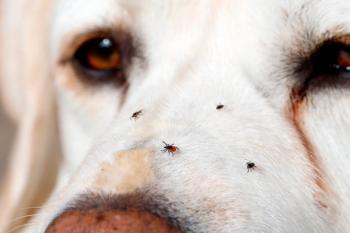
WNV spread pits migratory v. contained avians
Although reservoirs of birds are known to serve as amplifying hosts for West Nile Virus in horses, humans and other animals, what isn't yet proven is whether those birds are migratory or contained.
Although reservoirs of birds are known to serve as amplifying hosts for West Nile Virus in horses, humans and other animals, what isn't yet proven is whether those birds are migratory or contained.
John Rappole, Ph.D.
Two scientists, both employed by the Smithsonian Institution, Front Royal, Va., have differing opinions.
Peter Marra, Ph.D., is nearly convinced of migratory viral spread, while John Rappole, Ph.D., argues the case of localized avian species.
Marra, a terrestrial animal ecologist with a research team funded by the Centers for Disease Control and Prevention, (CDC) is waiting for the "smoking gun" to prove migratory birds are the viral transporter to new states, even though sampling still indicates otherwise.
For two years researchers have been attempting to measure the prevalence of West Nile Virus - either active virus or antibodies - in a wider range of species than are being sampled by most health agencies.
One school of thought points to the lowly house sparrow as the single most damaging carrier of West Nile Virus.
"We've yet to find any active WNV," says Marra, who has sampled crows, and is currently helping to conduct massive sampling of non-crow species (passerine or songbirds) during the breeding season, migration and the wintering grounds in Mexico, Jamaica and Puerto Rico.
"We don't know migratory birds are indeed the disperser. We've sampled thousands of birds and have found antibodies but not live virus. All fingers seem to be pointing toward migratory birds, but it isn't something that's been documented clearly," he says.
Before jumping ahead
Although the migratory case of West Nile is still a no-show, Marra says the current sampling may be partly to blame.
"It is incredibly biased, because (many have) just sampled crows. We have not been doing a general monitoring effort of other wild birds. The dead sea of people and birds... all play roles in how we can detect this."
Other side of fence
Rappole, lead author of a 2000 CDC-funded study, entitled "Migratory Birds and Spread of West Nile virus in the Western Hemisphere," was originally sold on the migratory bird theory.
The study, commissioned by CDC near the initial WNV outbreak in New York City in 1999, required Rappole to speculate whether migrants might be involved in spreading the disease, and if so, how the disease might move in the United States. Since then, he has observed the accuracy of predictions based on that assumption.
The connection of WNV to migrants is at best hazy, he notes.
Table 1: Avian Migration Patterns in the U.S.
"Right now it does not look to me as though migrants have been moving the disease. If migrants were moving it, as I mentioned in my 2000 article, you could expect it to move very far, very fast. It's been three years now, and what we've seen is pretty steady gradual movement of the disease about 70-100 km a month," he says. "Also if it were migrants, you'd expect it would be more on a north-south axis, but it's just gone as far north and west as south."
Additional research evaluates the duration in which migratory birds can remain viremic. Migrants don't fare well in the endurance category. They reportedly get sick fast - many even die - and are only able to spread the disease for up to 48 hours.
Migrants do serve well to amplify the disease, Rappole notes. "Once the disease has moved into an area, then birds flocking at wetlands or urban sites, where there are lots of mosquitoes, would make them good candidates for really getting a disease rolling."
What's to blame?
If migrants are only secondary culprits, what's to blame?
The lowly house sparrow - that chirpy songbird found in a multitude of backyards in flock-like numbers, says Rappole.
Normal dispersal by a fairly sedentary bird such as the house sparrow could account for the disease's movement. It's located nationwide; dispersal is more gradual. It's not a long-distance migrant, but can move up to 50 km from where it is located.
House sparrows have been found to be viremic for longer periods. They don't die at the rates the migrants seem to be dying. Crows, often blamed for WNV spread, die outright at nearly 99 percent, whereas house sparrows' mortality rate registers at 40 percent.
Newsletter
From exam room tips to practice management insights, get trusted veterinary news delivered straight to your inbox—subscribe to dvm360.






